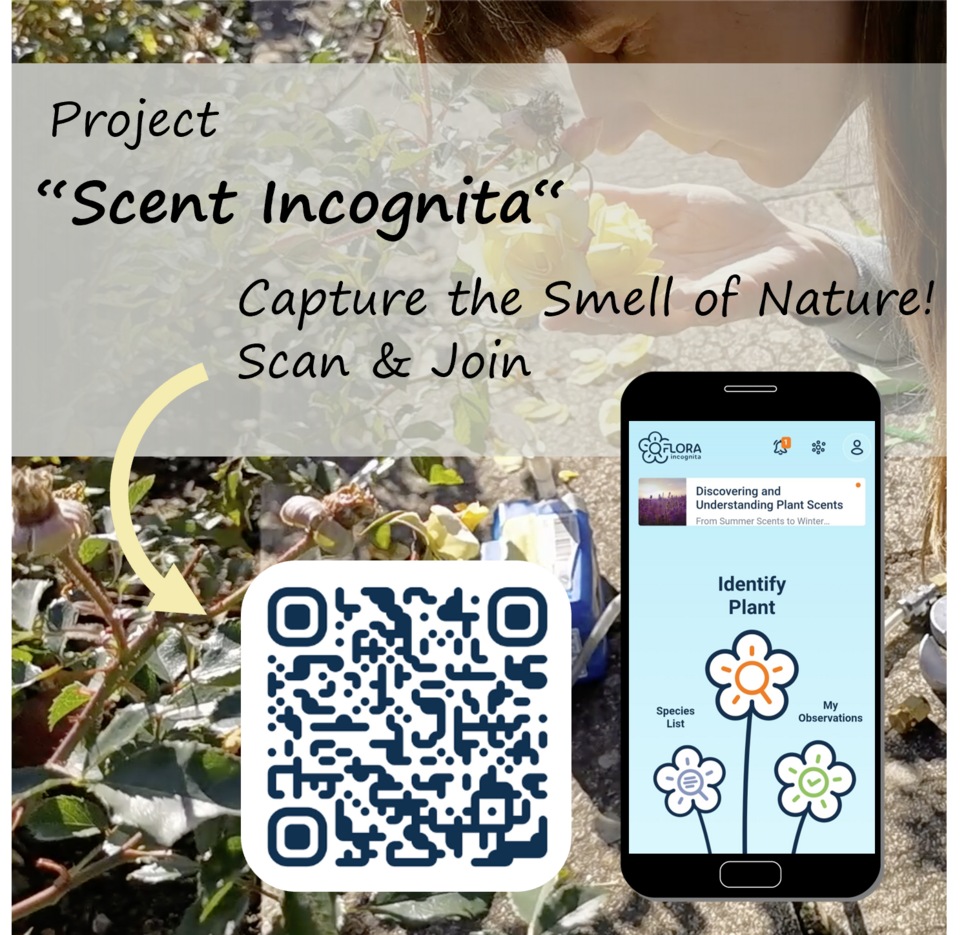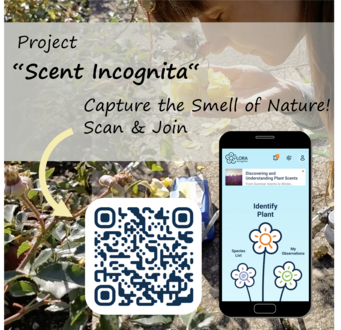Scent Incognita
Take a Sniff! Capture the Scent of Nature 🌿👃✨
Plants don’t just communicate through their appearance – they also have their own unique scent! Some smell intensely of honey or citrus, while others surprise us with spicy or even unexpected aromas. But what does a flower really smell like? Does its scent change depending on location, time of day, or weather?
With our new scent feature, you can document exactly that – and actively contribute to creating a unique fragrance database!
Why participate?
🌱 Support science – Your entry helps build a unique scent archive of the plant world. With this growing dataset, researchers can explore how location, climate, and season influence the way plants smell.
The scent descriptions you provide reveal how we, as individuals, perceive and interpret smells—especially valuable in a world where no universal system for classifying scents yet exists.
👉 Our scent projects: D2Smell, WOLF , City Scent Map Mainz
👃 Discover new perspectives
Many plants have fascinating fragrance notes that often go unnoticed. By consciously perceiving and describing them, you sharpen your senses and experience nature in a completely new way. We hope to soon draw your attention to interesting scents in your surroundings as well—such as blackthorn, lilac, or jasmine.
Through mass spectrometry analysis, we can identify the chemical components of floral scents and will be able to display this information—so that users can discover which molecules make up the smells they encounter.
👉 First examples: Blackthorn, Rose
🌍 Uncover patterns
Every plant has its own unique scent—and this doesn’t depend solely on the species. Environmental factors like temperature, time of day, season, and surrounding landscape all influence a plant’s scent profile.
As these odors are released into the air, they undergo oxidation in the atmosphere, forming various organic compounds and particles. By analyzing these transformations, we can gain valuable insights into local air chemistry.
Most atmospheric models average data over large spatial scales—typically 10 to 100 kilometers—which means we miss the fine details of localized scent plumes and short-lived events like blooming trees.
Scents are rarely shown on maps. But with enough observations, we can begin to visualize when and where specific scent patterns occur—and how they change over time.
How it works:

📸 Identify a plant using the app
👃 Smell it and describe its fragrance – is it sweet, spicy, fruity, or earthy?
🌟 Share your perception with us and help explore the fascinating world of plant scents!
Your descriptions become part of a large community database. Together, we can create a more complete picture of the world of plant fragrances. So: Take a deep breath, sharpen your senses, and let’s go! 👃🌿✨
Text: Alexandra Gutmann
